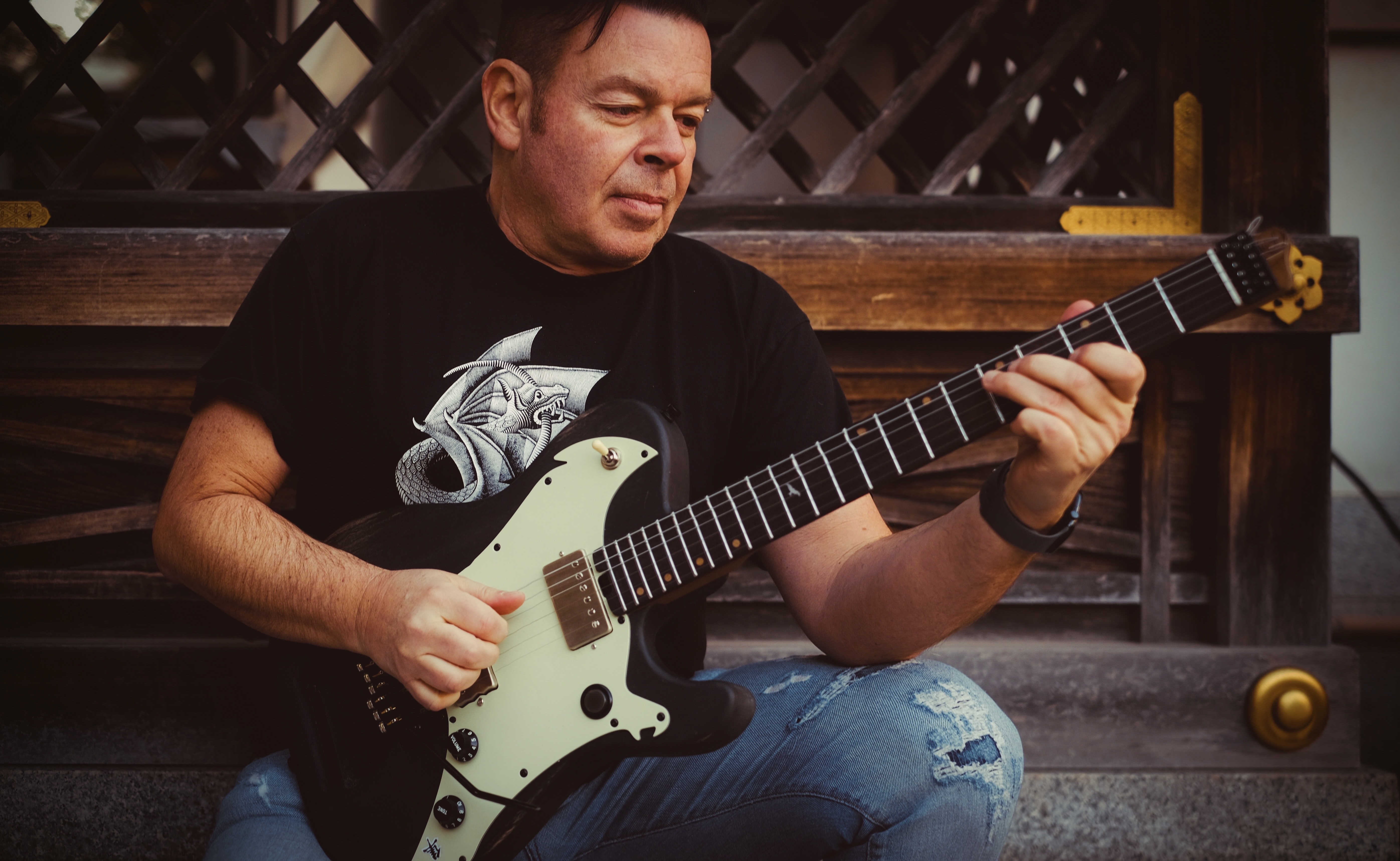Miami-based producer and composer Leitvox is back with Inertia, a track that sets the stage for his forthcoming EP Post-Era. Blending the analog pulse of classic rock with the immersive scope of electronic music, Inertia doesn’t just mark a sonic shift—it introduces a conceptual landscape. One where momentum itself becomes a metaphor: for technology’s accelerating influence, for Miami’s volatile transformation, and for the uncertain trajectories we face as a society.
A longtime fixture in Wynwood’s creative scene, Leitvox channels both place and perspective into this new chapter. The single unfolds with a cinematic arc, suggesting not just a soundscape but a worldview—one informed by the contradictions of innovation, the aesthetics of ruin, and the deep philosophical undercurrents of climate anxiety and digital overreach. In this exclusive Q&A with Too Much Love, Leitvox opens up about the creative tensions behind Inertia, the evolution of Miami’s underground scene, and why the future may not be something we can simply tech our way out of.
“Inertia” blends rock elements and immersive synths—how did Miami’s eclectic sonic landscape influence this track’s evolution?
Miami is a hub for electronic music. It has become a destination for DJs and producers worldwide. It also features a unique mix of music genres, with Latin American and Hip-hop being the most prominent. But an underground movement of rock, punk, and jazz is gaining popularity. I think that the electronic and underground scenes in the city have influenced the sound of my music throughout the years. It has also given me a reason to add a little something to Miami’s underground culture, helping to keep it alive. The underground music scene is essential for enriching the city's artistic environment.
You describe “Inertia” as a reflection on technology’s momentum. How do you personally navigate the relationship between analog and digital in your creative process?
Throughout the EP, I blend both worlds, analogue and digital, so they interact and have a conversation. Both are incredibly important, not just digital, and the EP reflects that. I combine analog and digital sounds in all tracks, using electric and acoustic guitars processed with digital effects, acoustic drums and beat machines, and voices altered with digital distortion. The advancement in digital musical instruments is incredible, and I feel most improvements are meant to make things easier for the performer… way too easy. Music, even in the studio, is about performance. Some technologies are replacing performance, and some analog or acoustic instruments are becoming obsolete. I think it is very important not to forget traditional instruments, as they have an extraordinary history in music and allow you to perform rather than just push buttons that automate compositions.
Post-Era raises big questions about the future. As someone based in Wynwood since 2013, how do you see Miami’s own evolution reflecting the themes of your EP?
The environment and evolution of Miami reflect the EP’s theme; the future is likely more uncertain than usual, partly due to technology. I can clearly see that kind of uncertainty in Miami. I have experienced a transformation in the city over the past decade. Many large companies have viewed Miami as a tech hub, calling it the next Silicon Valley. But that has not materialized. They have put offices here, but not to incubate technology. The technologies that have been incubated are speculative, such as crypto firms. There is even a sculpture of a tech-bull in downtown, mirroring the bull on Wall Street. Moreover, the growth of infrastructure and luxury real estate is overwhelming, bringing about a major change to the city’s landscape. We ignore the fact that Miami's future will be severely affected by sea level rise in a few decades, and we hope that new technologies will save the city and its investments. Advanced concrete is one of them, which is supposedly less polluting than traditional concrete, or carbon capture that will suck up carbon emissions. At the speed of climate change, that hope, however, makes the future feel even more uncertain.
The visual aesthetic of Post-Era draws from both ruins and imagined futures. Can you tell us more about the collaboration behind the cover art and how it ties to the music?
I decided to create the cover art myself. Usually, I work with artists on my album covers, but this time I wanted to challenge myself with the visual aspect of the project. The cover features autonomous technologies with symmetrical forms that interact with archaeological ruins. The scenes are set in isolated natural locations. The artwork depicts machines, probably studying our heritage by exploring old architectural structures. There are no signs of human presence, but that doesn’t mean there are no humans around, or a world we do not want to live in. It is probably a better future than we imagine, or perhaps worse. So, the artwork’s subject is that uncertainty and encourages reflection on questions like: Where is our future headed? What will be the impact of advanced technologies, particularly AI, on our progress? Such a world is represented musically in the EP. I blend natural sounds, such as wind and water, to depict the landscape, and introduce eclectic and traditional acoustic instruments alongside electronics that convey the interaction between machines, humans, and our past.
You’ve worked with artists like Gavin Clark and Nina Miranda—how do those past collaborations echo into this new phase of your work?
I have been very fortunate to work with artists I truly admire throughout my career. I believe collaboration enriches everyone involved artistically. I have learned a lot from all of them. This time, however, I decided to compose and produce the entire EP myself, which was an enormous task, but I can honestly say I wouldn’t have been able to do it without the valuable experience I gained from such amazing collaborations. During the production and composition process, they taught me techniques and tricks I now use in my music. I hope I have taught them something as well, that they now use in their work.
What kind of emotional or philosophical response are you hoping listeners in Miami take away from “Inertia” and the upcoming EP?
Today, more than ever, we need to reflect on the impact of advanced technologies in our lives. Technologies can push us off our current course; that is what inertia is: a force that alters an object’s trajectory. And consider whether that technological push will lead us to positive outcomes, it will probably not be free. For example, because all technological advancements that depend on fossil fuels, we have prospered in many ways, but we will face unprecedented challenges with a warmer climate. AI is highly appealing and incredibly useful; it can take us to another level as a civilization. But we must consider the risks and potential costs, which are largely overlooked.
Miami will face enormous challenges due to climate change. The good side is that the city currently attracts a lot of investment. I hope the incoming capital is used wisely and sustainably. Infrastructure for climate adaptation, education, arts and sciences are some areas that need focus and investment. Reflecting on our present opportunities and possible outcomes may help us all who live in Miami picture and design a path to a better future. We must take advantage of innovations rather than let them push us towards somewhere we don’t want to go.
CONNECT WITH LEITVOX
INSTAGRAM | SPOTIFY | WEB






.png)



